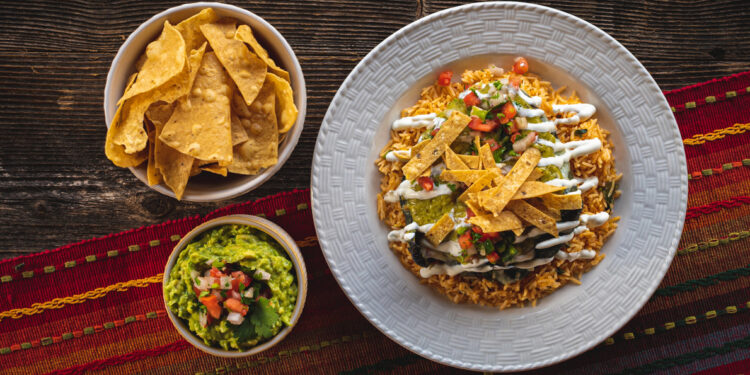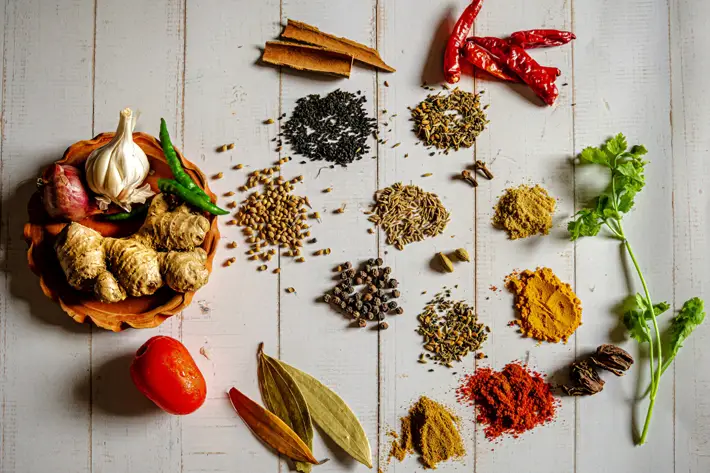Culinary Adventures: Exploring World Cuisine and Travel Through Food

Food has the power to transport us to different places and experiences, and there’s no better way to explore new cultures than through their cuisine. From street food to fine dining, each dish has a story to tell and can provide a glimpse into the heart of a place and its people. Whether you’re a seasoned traveller or dreaming of your next adventure, culinary exploration is a thrilling and delicious way to satisfy your wanderlust.
One of the joys of culinary adventures is the connection between food and travel. Each bite can transport you to a different place and time, and every meal is an opportunity to learn more about the local culture and customs. Whether you’re enjoying a bowl of pho on a busy street corner in Hanoi, savouring a plate of pasta in a cosy trattoria in Rome, or tasting fresh ceviche on a sunny beach in Mexico, every bite is a chance to immerse yourself in the sights, sounds, and flavours of a new place.
Another thrill of culinary adventures is the opportunity to try new dishes and flavours. From exotic fruits and spices to unfamiliar meats and vegetables, there’s always something new to discover. Whether you’re sampling local specialties or experimenting with fusion cuisine, the possibilities are endless. And the best part? Even if you can’t travel far from home, you can still explore the world through your taste buds. With the right ingredients and recipes, you can recreate the flavours of your favourite destinations in your own kitchen.
So, whether you’re a seasoned traveller or a curious foodie, culinary adventures are an exciting and delicious way to explore the world. Join us as we embark on a journey through the culinary landscapes of different countries and discover the stories and flavours behind some of the world’s most beloved dishes.
Exploring World Cuisine: From Asia to Europe and Beyond
Exploring world cuisine can be a delicious way to travel the globe without ever leaving your kitchen. Each culture has its own unique flavours, ingredients, and cooking techniques that define its cuisine. From the bold and spicy dishes of Southeast Asia to the hearty and comforting dishes of Europe, there is a whole world of flavours waiting to be explored.
• Asian cuisine, for example, is known for its bold and complex flavours that often incorporate spicy, salty, and sour notes. Chinese cuisine is famous for its delicate dim sum and savoury stir-fries, while Thai cuisine is known for its fiery curries and fresh herbs. Indian cuisine is a feast for the senses, with fragrant spices like cumin, coriander, and turmeric often used in curries and stews.
• European cuisine, on the other hand, is often defined by its hearty and comforting dishes. Italian cuisine is famous for its pasta dishes and pizza (and of course its traditional arborio rice: https://riceselect.com/product/arborio), while French cuisine is known for its buttery croissants and rich sauces. Spanish cuisine is celebrated for its bold flavours and use of fresh seafood, while British cuisine is famous for its comforting pub food like fish and chips and shepherd’s pie.
No matter which cuisine you’re interested in exploring, understanding the regional ingredients and cooking techniques is essential to recreating authentic dishes at home. From mastering the art of dumpling-making to perfecting the art of French pastry, there are endless possibilities for culinary exploration.
Travelling Through Food: A Culinary Tour of the World
Food is a universal language that connects us all. Whether you’re a seasoned traveller or an armchair explorer, food can transport you to far-off lands and immerse you in different cultures. One of the best ways to experience the world’s diverse cuisine is by planning a culinary tour.
A culinary tour is a trip that revolves around exploring local food scenes and trying authentic dishes. It can take you to various countries and regions, each with its unique flavours and culinary traditions. From the spices of India to the street food of Southeast Asia, the world is full of delicious surprises waiting to be discovered.
To plan a culinary tour, start by choosing a destination that inspires you. Research the local cuisine, including popular dishes, ingredients, and cooking techniques. Look up food tours, cooking classes, and local markets that you can visit. Make a list of must-try dishes and restaurants to try.
When you arrive at your destination, be sure to immerse yourself in the local food scene. Talk to locals, visit markets and street vendors, and try as many dishes as possible. Don’t be afraid to step out of your comfort zone and try something new. You might discover a new favourite dish or ingredient that you can’t find anywhere else.
Exploring the world through food not only satisfies your taste buds but also broadens your horizons. You’ll gain a better understanding of different cultures and traditions and appreciate the role that food plays in daily life. So, pack your bags and get ready for a culinary adventure that will tantalise your taste buds and expand your worldview.
Beyond the Plate: The Cultural Significance of Food
Food is not just about satisfying hunger and nourishing the body; it also carries cultural significance and meaning. From religious rituals to family gatherings, food plays a significant role in many cultures around the world. Each cuisine has its unique story, shaped by historical, social, and environmental factors. Understanding the cultural significance of food can deepen our appreciation of different cuisines and enhance our culinary adventures.
For example, in Italy, the meal is more than just a time to eat; it is a time to gather with family and friends, share stories, and connect with one another. The traditional Italian meal consists of several courses, starting with antipasti and ending with dessert and espresso. Each course is carefully curated, highlighting the freshest seasonal ingredients and regional specialties. By partaking in this tradition, one can understand the significance of family and community in Italian culture.
Similarly, in Japan, food is not just about nourishment, but also about aesthetics and mindfulness. The Japanese take great care in the presentation of their food, creating beautiful and intricate dishes that reflect their respect for nature and the seasons. For example, the Japanese celebrate cherry blossom season with sakura-flavoured treats, such as mochi and sakura tea. This appreciation for the fleeting beauty of nature is reflected in their cuisine.
In India, food is an integral part of religious and cultural celebrations. The cuisine is diverse, with each region offering its unique blend of flavours and ingredients. For example, during the festival of Diwali, families prepare traditional sweets, such as gulab jamun and barfi, to share with their loved ones. These sweets symbolise the sweetness of life and the importance of family and community.
Exploring world cuisine doesn’t always require a plane ticket or a passport. You can embark on a culinary adventure right in your own kitchen. By incorporating global flavours into your cooking, you can expand your palate and explore new cultures without leaving home.










